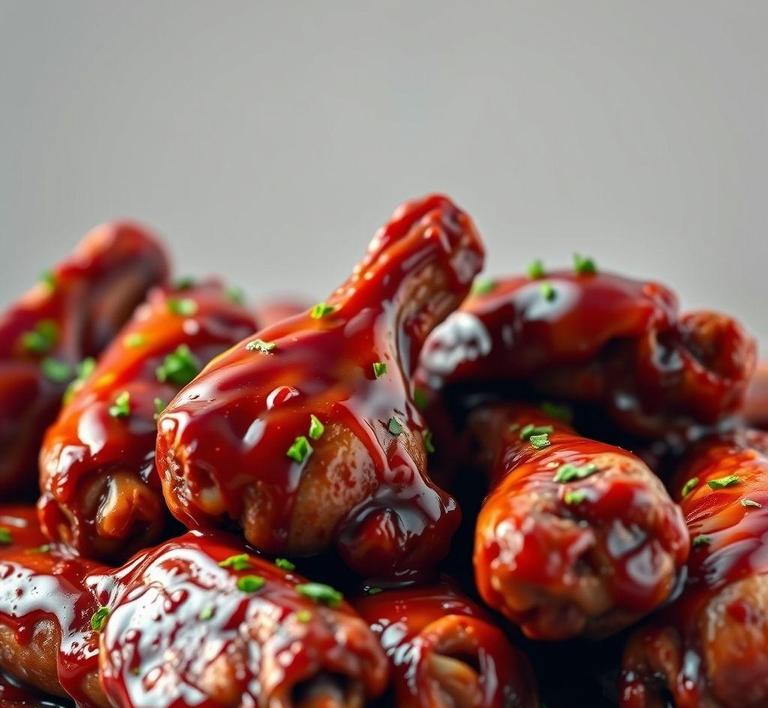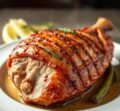Ever wondered if it’s safe to refreeze chicken wings? Whether you’ve cooked up a batch and have leftovers or bought a family pack and didn’t use it all at once, refreezing can seem a little tricky. But don’t worry! With the right techniques, you can safely refreeze your chicken wings without compromising their flavor or texture. This guide will walk you through everything you need to know-from how to properly store them to the best ways to thaw and reheat them, so you can enjoy your chicken wings at their best, every time.
Can You Refreeze Chicken Wings?

Refreezing chicken wings, or any poultry for that matter, is a topic that raises questions for many home cooks and food safety enthusiasts. The general rule of thumb is that it is technically possible to refreeze chicken wings, but the process should be approached with caution and an understanding of food safety and quality.
When chicken wings (or any meat) are frozen, thawed, and then refrozen, the quality of the meat can degrade over time. This is primarily because the ice crystals that form during freezing can damage the meat’s cellular structure. Additionally, if chicken wings are left out too long or thawed improperly, harmful bacteria like Salmonella or Campylobacter can begin to multiply, making refreezing risky without the right precautions.
How To Refreeze Chicken Wings?
Refreezing chicken wings isn’t as simple as just tossing them back into the freezer. To maintain safety and preserve as much quality as possible, there are several important steps to follow:
-
Thaw Properly:
The first rule of thumb is that chicken wings should be thawed in a controlled, safe environment to prevent bacterial growth. Ideally, thaw the chicken wings in the fridge over several hours or overnight. This keeps the temperature of the meat at a consistent, safe level. Never thaw chicken wings at room temperature because this will expose the meat to the ‘danger zone’ temperature range (40°F to 140°F), which is perfect for bacteria to multiply rapidly.
-
Cook the Chicken Wings First:
If you’ve already thawed the chicken wings and don’t plan on using them right away, cooking them before refreezing is your best option. The reason for this is that cooking kills any bacteria that may have developed during the thawing process. Once cooked, chicken wings are safe to refreeze, provided they are handled and stored correctly. This will also help lock in flavor and texture, as uncooked wings might degrade more upon being frozen again.
-
Cool Properly:
After cooking, allow the chicken wings to cool quickly at room temperature (but no longer than two hours), and then transfer them into the fridge to cool down further. You can also cool them rapidly by placing them in a shallow dish to allow for quicker heat loss.
-
Use Airtight Packaging:
Once the wings are cooked (or even if you decide to refreeze raw wings), make sure to store them in airtight packaging. A freezer bag or a vacuum-sealed bag is ideal for reducing the exposure of the chicken to air. Air exposure causes freezer burn, which leads to dry, tough chicken wings with an undesirable texture and taste. If you don’t have a vacuum sealer, double-bagging in plastic freezer bags works just fine.
-
Label and Date:
Always label your chicken wings with the date that you are refreezing them. Chicken should not be kept in the freezer for more than six months before consuming, although it’s always best to eat it sooner for optimal taste and texture. By keeping track of when they were refrozen, you ensure you use the wings within an appropriate timeframe.
Quality Impact
Refreezing chicken wings does have an impact on their overall quality, and it’s essential to manage your expectations when it comes to taste, texture, and juiciness. Here’s a breakdown of the primary factors that influence the quality of refrozen chicken wings:
-
Texture:
Refreezing can affect the texture of the chicken wings, especially if they are thawed and refrozen multiple times. Each freezing and thawing cycle causes ice crystals to form inside the meat, which damages the muscle fibers and can result in a more watery and mushy texture. While this isn’t usually a major issue for wings that will be tossed in sauces, it can make them less appealing if you plan to serve them plain or roasted.
-
Flavor:
The flavor of chicken wings can also be impacted by refreezing. The freezing process can cause some loss of natural juices, leading to drier meat upon cooking. This is particularly noticeable when the wings are not cooked prior to being refrozen, as the loss of moisture affects the flavor profile. Saucing or marinating the wings before cooking can help mitigate some of this loss, adding moisture and enhancing taste.
-
Risk of Freezer Burn:
Freezer burn is one of the most significant quality issues that arise from refreezing chicken wings. If the wings aren’t sealed properly or are exposed to air in the freezer, freezer burn can set in. This occurs when moisture evaporates from the surface of the chicken, leaving behind grayish-brown patches that are tough, dry, and less flavorful. While freezer-burned chicken is still technically safe to eat, the texture and taste will be notably unpleasant.
-
Nutritional Value:
Freezing does not significantly affect the nutritional value of chicken wings. Protein content remains the same, and the fat levels are relatively unchanged. However, the freezing and thawing process can cause slight changes in water-soluble vitamins like B-vitamins, which may be lost during the freezing and thawing process. This loss is minimal, but if you’re looking for the highest nutritional value, it’s always better to consume chicken wings fresh.
refreezing chicken wings is safe as long as proper food safety practices are followed. However, it’s important to consider the potential quality deterioration that might occur with each freezing and thawing cycle. The texture, flavor, and overall eating experience of refrozen wings will likely be affected, though the impact is often minor, especially if you plan to use sauces or cook them thoroughly before eating. If you want to preserve both the safety and quality of your chicken wings, the best approach is to cook the wings first before refreezing, use airtight storage, and be mindful of the refrozen wings’ shelf life.
As with any frozen food, it’s critical to be aware of time and storage conditions to minimize the risk of foodborne illness and quality degradation. Ultimately, if you’re diligent about thawing and freezing your chicken wings properly, and you don’t mind a slight sacrifice in texture, refreezing can be a convenient way to preserve your leftover wings.
Is It Safe To Refreeze Chicken Wings?
Refreezing chicken wings is a common question for many home cooks, especially when it comes to leftovers or extra wings that didn’t get used in a single meal. The simple answer? It depends on how the chicken wings were handled throughout the process.
When chicken wings are frozen for the first time, they should be properly stored to maintain their safety and quality. If the chicken wings were thawed in the refrigerator and not left out at room temperature for longer than two hours, they can be safely refrozen. However, the key factor here is the condition of the wings before refreezing.
The risk of bacterial growth increases when chicken wings are improperly thawed or left at unsafe temperatures for extended periods. If chicken wings were thawed using unsafe methods-like on the countertop-there’s a much higher chance they could be contaminated with harmful bacteria such as Salmonella or Campylobacter, which are common in poultry. These bacteria can multiply rapidly once the chicken reaches temperatures above 40°F (4°C), and refreezing them does not kill these pathogens.
In short, it is generally safe to refreeze chicken wings if they were thawed safely in the fridge or using another safe method (e.g., microwave or cold water bath). However, once the wings have been thawed and left at room temperature for too long, refreezing is not recommended due to the risk of foodborne illness.
Signs That Chicken Wings Should Not Be Refrozen
Before deciding to refreeze chicken wings, there are a few critical signs to watch out for that indicate they should not be put back in the freezer.
- Extended Thawing Time: If the chicken wings were left out at room temperature for more than two hours, it’s best to discard them. Bacteria multiply rapidly between 40°F (4°C) and 140°F (60°C), which makes the wings unsafe for refreezing and consumption.
- Foul Odor: If the wings have developed a strong, sour, or off-putting smell, they are likely spoiled. This odor is a direct indicator of bacterial growth, and no amount of freezing will reverse the damage. It’s essential to trust your nose in these situations, as spoilage often comes with a distinct smell.
- Unusual Texture: When meat becomes slimy or sticky to the touch, it’s another red flag. This is often a sign of bacterial contamination, and refreezing these wings could pose health risks. Fresh, high-quality chicken wings should feel firm and not slimy.
- Color Change: While slight changes in color can occur during the freezing process, drastic changes-like a dull or greyish tint-may indicate spoilage. Fresh chicken should be pinkish or light beige. A darker hue or excessive browning after thawing suggests the wings have been improperly stored or have gone bad.
- Freezer Burn: If the chicken wings show signs of freezer burn (dry, pale, and leathery spots), they may still be safe to eat but will suffer in texture and taste. Although refreezing them after this kind of damage won’t make them dangerous, it will further degrade their quality. If the wings have extensive freezer burn, they should be discarded.
Common Refreezing Mistakes
Refreezing chicken wings can be tricky, and there are several common mistakes that can lead to food safety issues or inferior taste and texture.
- Thawing at Room Temperature: One of the most dangerous things you can do is thaw chicken wings on the kitchen counter. The outer parts of the wings can reach temperatures that allow bacteria to grow, while the inside remains frozen. This can lead to a higher risk of foodborne illness. Always thaw chicken wings in the fridge or using a safe method like the microwave or cold water bath.
- Not Freezing Immediately After Purchase: Many people buy chicken wings in bulk and let them sit in the fridge or pantry for too long. If they’re not frozen within a day or two of purchase, they can deteriorate in quality. Refreezing chicken wings that have been sitting in the fridge for an extended period will only degrade the texture further. It’s always best to freeze wings as soon as you buy them if you’re not going to cook them within a few days.
- Using the Same Packaging: Once chicken wings have been thawed, it’s tempting to just toss them back in the same packaging or container. However, this can introduce moisture and air that can negatively impact the texture and cause freezer burn. When refreezing, it’s essential to repack the wings in fresh, airtight packaging to prevent moisture loss and contamination.
- Refreezing After Cooking: It’s perfectly safe to refreeze cooked chicken wings, but many people make the mistake of reheating them before refreezing. Cooking and reheating multiple times can negatively affect both the taste and texture of the wings. It’s better to freeze cooked wings in a manner that preserves their moisture and quality rather than refreezing them repeatedly.
- Refreezing Without Proper Cooling: When refreezing cooked chicken wings, ensure that they have cooled down to room temperature before freezing. If you place hot wings directly in the freezer, you risk raising the freezer temperature, which could affect the quality of other frozen items.
Tips And Tricks
To ensure your chicken wings remain safe to eat and maintain their flavor and texture during refreezing, here are some practical tips and tricks:
- Use Vacuum Sealing: If you’re freezing chicken wings for long-term storage, vacuum-sealing them is an excellent option. This method removes air, which prevents freezer burn and helps retain the wings’ freshness. It’s particularly useful if you plan to store them for several months.
- Label and Date: Always label your packages with the date you’re freezing them. This ensures you use the wings within a safe time frame and helps you keep track of how long they’ve been frozen. It’s also helpful for organizing your freezer and avoiding the risk of keeping wings for too long.
- Pre-portion Your Wings: Consider portioning your chicken wings into smaller, meal-sized servings before freezing. This way, you only need to thaw what you plan to eat and can avoid repeatedly thawing and refreezing a large batch.
- Use Ice Cube Trays for Small Portions: If you’re freezing just a few wings or want to preserve small quantities, you can freeze them in ice cube trays. Simply place the wings in the tray, freeze them, and then transfer them to an airtight bag. This allows you to defrost only the amount you need without refreezing.
- Thaw Safely: To thaw frozen chicken wings safely, always move them from the freezer to the fridge. This can take several hours or overnight. If you’re in a hurry, you can use the microwave or a cold water bath, but avoid thawing on the counter.
- Don’t Refreeze Multiple Times: Even if the wings seem safe to refreeze, doing so multiple times will affect both their taste and texture. It’s best to only freeze and thaw once whenever possible.
Conclusion
Refreezing chicken wings is safe if proper precautions are taken, but it requires careful handling to prevent bacterial contamination and preserve the wings’ quality. Always make sure that the wings were thawed in a safe manner (in the fridge or with cold water), check for signs of spoilage, and avoid common mistakes such as refreezing after improper thawing or using the wrong packaging. By following best practices for freezing, thawing, and refreezing, you can safely enjoy chicken wings without compromising on safety or taste.
In summary, refreezing chicken wings is not inherently unsafe, but it does require attention to detail. Ensuring that you follow proper guidelines for thawing and handling, along with using good packaging and organization, will make a significant difference in maintaining the wings’ flavor and safety. With a bit of care and knowledge, you can enjoy perfectly preserved chicken wings any time.


